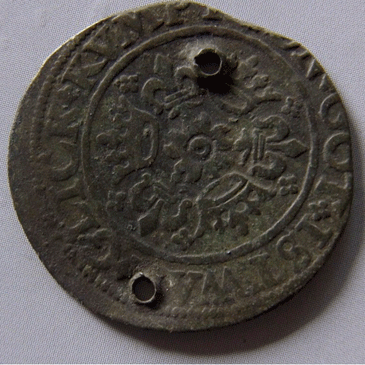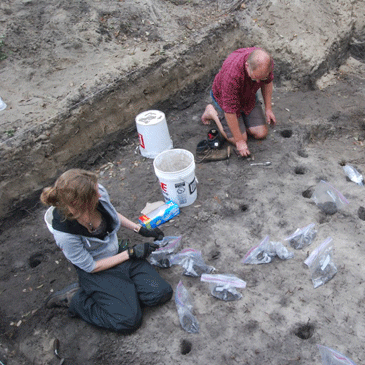New clues to the fate of America's Lost Colony

Archaeologists from the University of Bristol have uncovered artefacts that they believe may help solve the long-running mystery of the fate of the first English colonists in North America. Excavations on the Island of Hatteras (North Carolina) have discovered a number of artefacts, dated to late 16th century, which point to the possibility that the colonists assimilated into the local Native American tribe. It is hoped these early findings could solve one of America's greatest historical mysteries.
Between 1584 and 1587, a number of expeditions were sent out from England to establish the first English colony in the New World. Under the leadership of Sir Walter Raleigh, the new lands were christened Virginia, and a permanent colony was established in 1587, that included over a 100 men, women and children. An expedition to locate the colony on Roanoke Island in 1590 discovered the settlement, but found it abandoned. The only clue to their whereabouts were the initials CRO carved on a tree and CROATOAN carved on a wooden post.
With English settlement at Jamestown in 1607, there were reports that the colonists had moved inland, and some had been killed by the local Indians, but otherwise their fate remained unknown.
The University of Bristol's research, working with the local community archaeology society, has been focused on the island of Croatoan, now called Hatteras. Here a significant number of native American sites have been located, through the 16th and 17th centuries. At one particular location, a number of dated artefacts have been uncovered that point to both the presence and the survival of descendants of the Lost Colony into the mid-17th century. Some of these artefacts were found in late 16th century levels, and include German stoneware and copper ingots. One diagnostic find was a Nuremberg counter, of identical form to those found on Roanoke Island. Nearby in midden levels, were found a rapier handle, a writing lead pencil and a writing slate. Excavations in the 1990's at this same site discovered an Elizabethan gold ring and a snaphaunce (musket mechanism) of c. 1580-1600. These midden levels date to the mid-17th century, and suggest that some of these precious artefacts were curated over a period of time before being discarded.

Professor Mark Horton, Professor of Archaeology at the University of Bristol and the director of the excavations with the Croatoan Archaeological Society, said: "These are still just clues, we have no smoking-gun proof that the colonists survived into the 17th century, but the discovery of so many high-status objects in one place does suggest that possibility - the colonists moved into the local Native American community and became assimilated."
Scott Dawson, the president of the Croatoan Archaeological Society, which has been sponsoring the project, said: "We have always thought that the colonists survived on Hatteras Island, and it is very exciting that the archaeological evidence is now beginning to support this idea."
The excavation work will continue in 2016, and it is hoped that a full report on the finds and their detailed analysis will be published shortly after.
Provided by University of Bristol




















